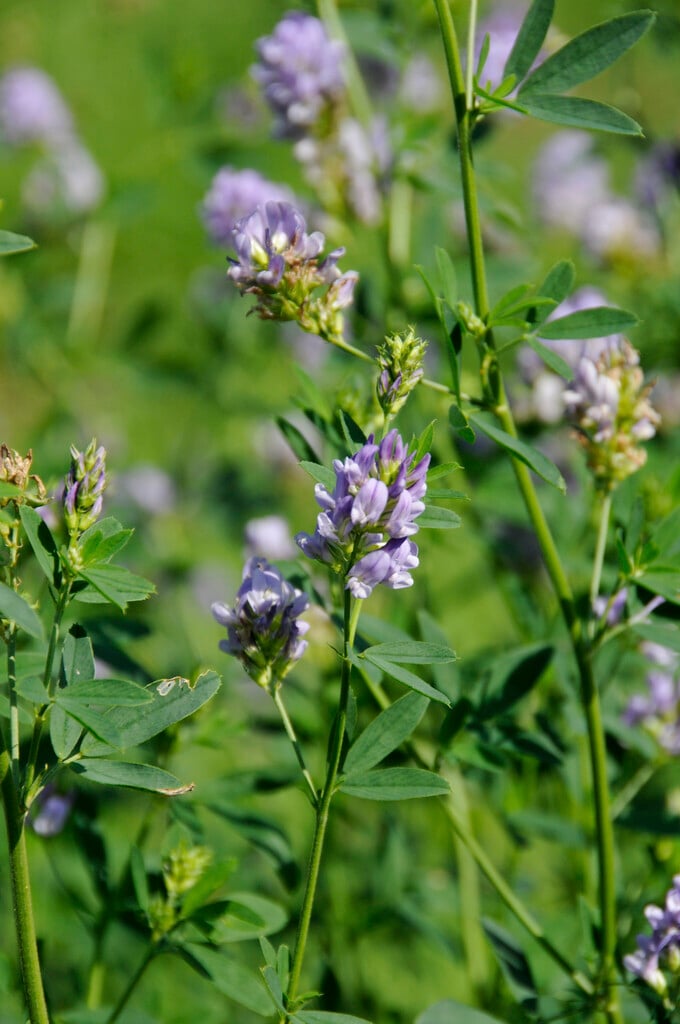Medicago sativa
lucerne
Also known as 'alfalfa'or 'purple medic' this herbaceous perennial legume with a deep tap-root and clover-like green foliage produces small purple flowers in the summer followed by flat pea-like fruits. Used in many countries as animal food or as a green crop as it improves nutrient levels in the soil and also soil quality by reducing compaction, also reducing the need for synthetic fertilisers
Other common names
alfafaalfalfa
see moreAmerican buffalo grass
Burgundy trefoil
common medick
holy hay
lucerne
purple medick
sainfoin
saintfoin

Buy this plant
Size
Ultimate height
0.5–1 metresTime to ultimate height
1–2 yearsUltimate spread
0.5–1 metresGrowing conditions
Moisture
Moist but well–drained, Well–drainedpH
Acid, Alkaline, NeutralColour & scent
| Stem | Flower | Foliage | Fruit | |
| Spring | Green | |||
|---|---|---|---|---|
| Summer | Purple | Green | ||
| Autumn | Green | |||
| Winter |
Position
- Full sun
- Partial shade
Aspect
East–facing or North–facing or South–facing or West–facing
Exposure
Exposed or Sheltered Hardiness
H7Botanical details
- Family
- Fabaceae
- Native to GB / Ireland
- Yes
- Foliage
- Deciduous
- Habit
- Bushy
- Genus
Medicago are annuals, perennials or small shrubs. Leaves have three leaflets and may be light, yellow-, mid- or blue-green. Their short sprays of pea-like flowers are attractive to bees and butterflies
- Name status
Correct
How to grow
Cultivation
Will grow in most situations including poor, dry soil
Propagation
Propagate from seed sown in autumn
Suggested planting locations and garden types
- Wildflower meadow
- Wildlife gardens
Pruning
No pruning required
Pests
May be susceptible to alfalfa weevil, leafhoppers and spotted aphids
Diseases
May be susceptible to bacterial wilt
Get involved
The Royal Horticultural Society is the UK’s leading gardening charity. We aim to enrich everyone’s life through plants, and make the UK a greener and more beautiful place.